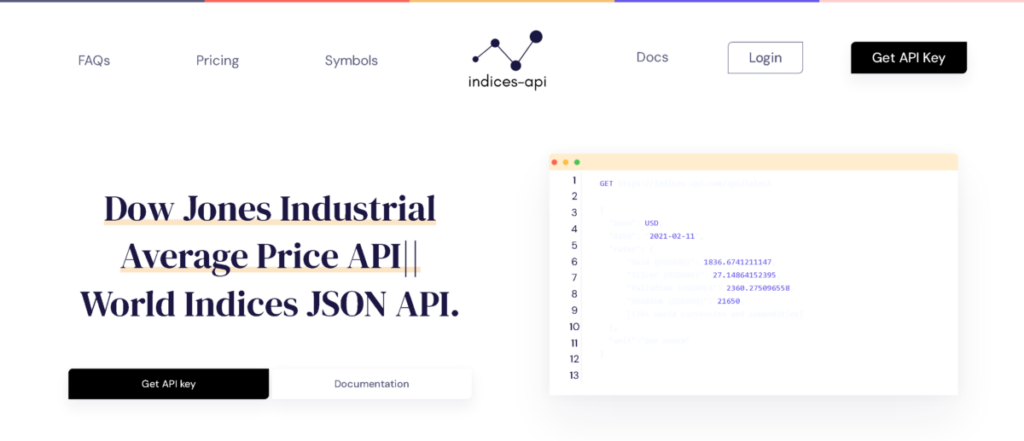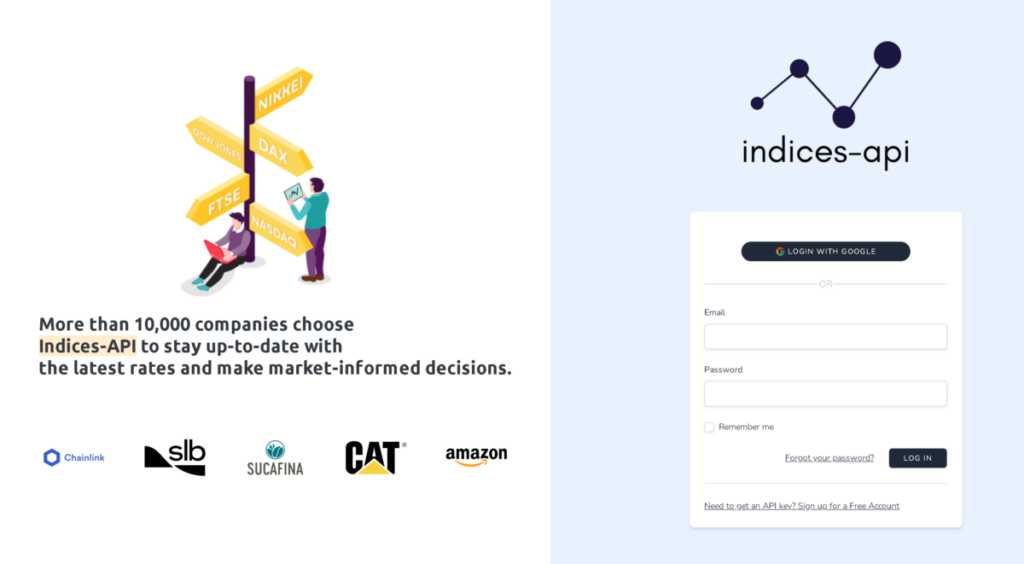In today’s fast-paced financial markets, real-time and reliable stock index data is essential for investors, analysts, and developers to make informed decisions and build effective applications. Fortunately, a reliable Market Indices Data API, such as Indices-API, simplify complex financial data and are crucial for achieving accurate insights. This article will explore how these APIs work and their importance in delivering reliable market information.
Exploring the Power of Indices-API: A Go-To Solution for Developers
Indices-API offers developers a competitive edge by providing real-time, historical, and forward-looking data across an extensive catalog of global stock indices. In today’s interconnected markets, developers can leverage such APIs to create sophisticated financial tools that meet user expectations for speed and reliability.

The API operates as a bridge between data sources and the applications developers create. Instead of manually fetching data from various exchanges, Indices-API aggregates the information, normalizes it, and presents it in an accessible format for developers. By offering market data from indices around the world, it becomes the go-to solution for those looking to integrate comprehensive stock market data into their projects.
Developers benefit not only from the breadth of data but also from the performance and reliability of Indices-API. Its architecture is designed to handle high-volume requests, ensuring that applications maintain peak performance even under heavy traffic loads. For developers building tools that rely on real-time data updates, having a reliable API that can handle thousands of queries per second without lag is invaluable.
Why a Reliable Market Indices Data API Matters
Nowadays, reliable market indices data is essential because it ensures that users have access to the most current and relevant information, minimizing the risk of errors in decision-making.

But a developer’s need for accurate market data goes beyond just historical data. They require real-time updates to build apps, dashboards, and trading platforms that can deliver value to their end-users. Having an API that provides consistent and up-to-date data reduces downtime, eliminates inaccuracies, and helps developers create reliable financial tools. This is where an API stands out. It delivers high-quality data from multiple indices across the globe, ensuring that developers are always working with the latest figures.
How to Get Started with Indices-API: A Step-by-Step Guide
- Visit the Indices-API website and create an account. Choose the pricing plan that best suits your needs, whether you’re a small-scale developer or managing an enterprise-level project.

- After signing up, navigate to the dashboard and request your unique API key. This key is essential for authenticating your requests and accessing the data you need.
- Indices-API provides comprehensive documentation that includes code snippets, best practices, and examples. Whether you’re using Python, JavaScript, or another language, the API integrates seamlessly with your tech stack.
- Use the API key to make your first request. The API supports a variety of query parameters, allowing you to pull data for specific indices, historical time frames, or real-time updates.
- Once you’ve pulled the data, start building your application. Whether it’s a portfolio tracker or a live market analysis tool, Indices-API will ensure you’re working with the most accurate and timely data.
Transforming Stock Market Development with This Market Indices Data API
Indices-API is revolutionizing the way developers access and utilize stock market data. By offering a comprehensive, reliable, and scalable solution, it empowers developers to build applications that provide real value to end-users. From its extensive catalog of indices to its real-time data capabilities, it simplifies the complexities of financial markets for developers!
Related Post: Image Search for Online Stores API For Accurate Product Matching

